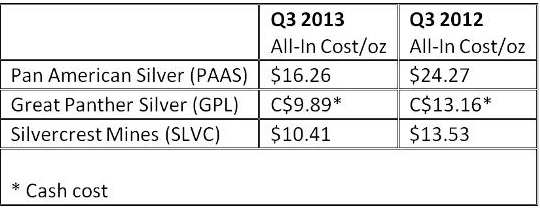 Gold has long been a sought after commodity. Human history, such as the conquest of the Americas, has been defined by the quest to find gold mines and reserves. Now, however, the world’s gold mines may be becoming fully tapped. Some experts even believe that all gold mines could become fully tapped within the next 20 years. This could have a dramatic impact on gold and bullion prices as while supply may run out, demand most likely will not.
Gold has long been a sought after commodity. Human history, such as the conquest of the Americas, has been defined by the quest to find gold mines and reserves. Now, however, the world’s gold mines may be becoming fully tapped. Some experts even believe that all gold mines could become fully tapped within the next 20 years. This could have a dramatic impact on gold and bullion prices as while supply may run out, demand most likely will not.
Gold production appears to have peaked in 2000 and since then new gold production has been declining by 1 million ounces each year. As of the end of 2010 there were only 51,000 tons of known gold reserves left in nature and at current production rates, these will run out within 20 years. Thus, unless large new deposits of gold are found that can be easily mined, the supply of new gold entering the market could drop considerably.
There is always a chance that new deposits of gold could be found, but new discoveries are becoming increasingly rare. Mining companies have been increasing their exploration operations but so far the results have been largely discouraging. Tellingly, new gold discoveries since the turn of the millennium have been well below discovery levels in the 1980s. A study by IntierraRMG has found that discovery rates have been declining even more rapidly in the last four years and that mining costs are going up.
Not all the news is bad for gold miners. A large mine was discovered in Xinjaing, China just a few months ago. This mine alone is estimated to hold some 53 tonnes of gold. Meanwhile, another 100 tonne mine was discovered in Mongolia in 2010. Of course these are a paltry amounts compared to the 172,000 tonnes that have been mined in human history, but there may be more undiscovered mines.
The combination of dwindling supply and increasing demand has the potential to greatly increase gold prices over time. Some investors may be concerned about short term trends that may see gold prices go down. Already in recent months, gold has come down from $1,664 at the close of 2012 to just over $1,300 at current market prices. If the supply of gold is going to run out in the long-run, however, a short-term drop in prices makes it a good time to buy gold.
In the long term, gold should turn out to be an even better investment as reserves around the world are depleted. Meanwhile, demand from emerging nations such as India and China will continue to rise. Already India and China are among the two biggest purchasers of gold in the world. The two countries are home to nearly 2.5 billion people, and their economies have been growing in excess of 5% for the last several years. As people in these countries and elsewhere become more wealthy, they will want to invest some of their discretionary income in gold. Demand will also grow as the world’s population continues to grow.
With gold supplies running out, however, the supply of gold will not increase. This means that demand will continue to increase at a time when supply no longer can, and that means rising prices. While there is a risk that gold could suffer some turbulence over the next few years, if gold supplies do indeed run out, gold prices should skyrocket. Anyone who purchases gold before natural deposits are fully tapped could stand to reap huge profits and returns.
The biggest risk for such a long-term strategy would be the discovery of a new gold mine. Companies have already been scouring the earth, however, in search of precious metals so most likely the biggest mines have already been tapped. Undoubtedly, there are still deposits of gold out there, but they are most likely buried under miles of the earth’s crust and out of reach of current mining techniques. While things could of course change in the future, for now gold looks like a great long-term investment.














